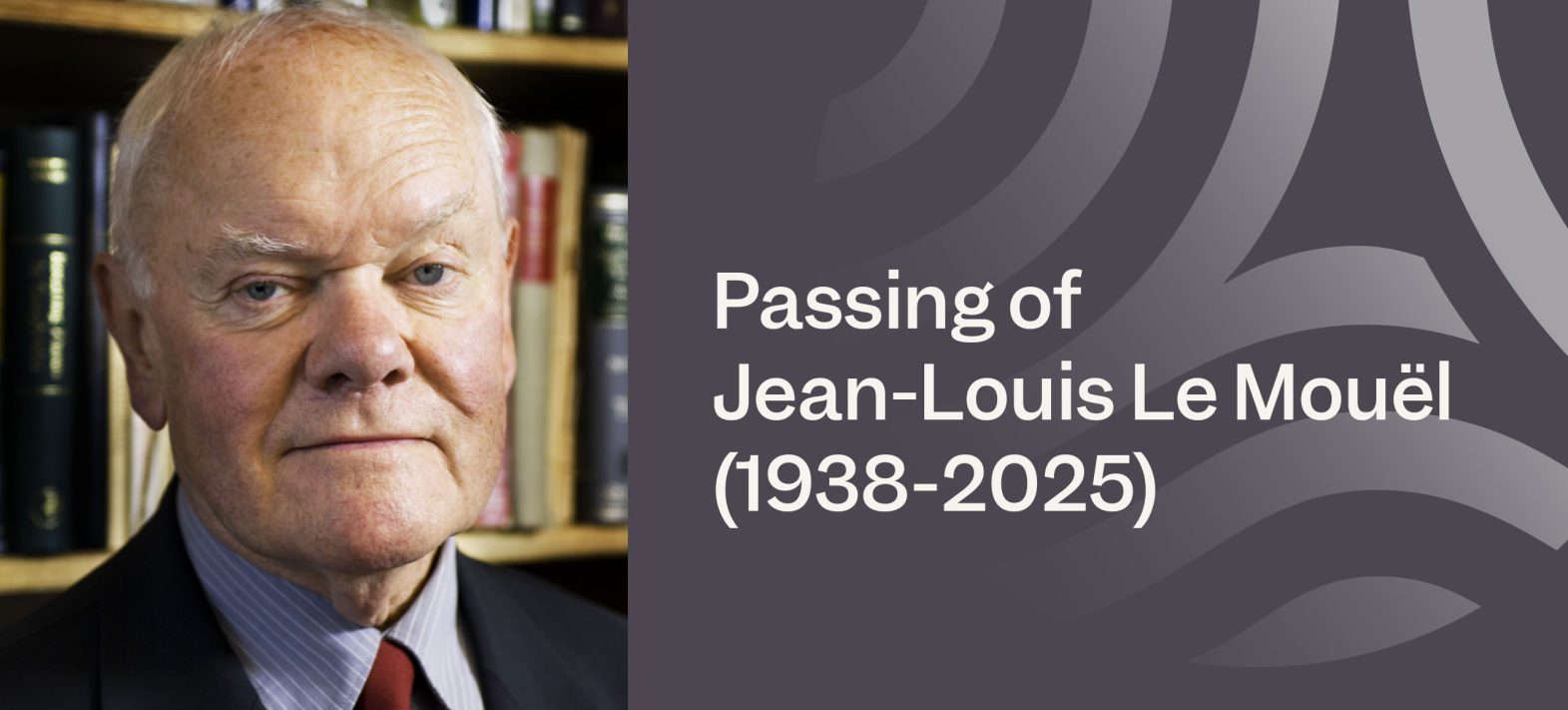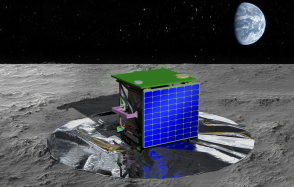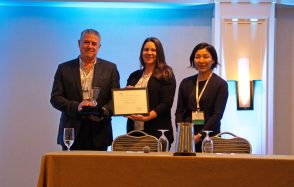Jean-Louis Le Mouël, former provisional administrator (1986–1991) and director of the Institut de physique du globe de Paris (1991–1996), passed away on Wednesday, 24 September 2025.
Born on 29 July 1938 in Remungol (Morbihan), he completed his secondary education in 1955 at Pontivy High School, studied for a degree in mathematics at the University of Rennes (1958), then moved to Paris where he took courses for a DEA (postgraduate diploma) in Earth Physics at the Paris Faculty of Sciences (1959) and prepared a postgraduate thesis at the Institut de physique du globe de Paris (IPGP) on thermo-elastic stresses at the ocean-continent boundary (1961). During his doctoral thesis, he quickly became interested in terrestrial magnetism. In 1969, he published a new magnetic map of France with Émile Le Borgne. This map remained a reference for many years.
Faithful throughout his career to the IPGP, which he directed from 1986 to 1996, he played a major role in developing a modern approach to geomagnetism, promoting the emergence of rapidly expanding disciplines, and encouraging the development of space activities and global networks of observatories in geomagnetism, volcanology and seismology, helping to make the IPGP the world-renowned institute for Earth and planetary sciences that it is today. He also trained a large number of researchers who are now active in France and around the world.
Jean-Louis Le Mouël’s scientific contributions are extremely numerous (nearly 300 publications) and wide-ranging. With a strong focus on observation as the starting point for his work – he himself spent many years at the National Magnetic Observatory in Chambon-la-Forêt at the beginning of his career – he is one of the pioneers of modern interpretation of magnetic observations. In the late 1970s, analysing long series of observatory data with Vincent Courtillot and Joël Ducruix, he established that the main field produced by the geodynamo in the Earth’s liquid core is capable of rapid variations, producing in particular ‘geomagnetic jerks’ on a global scale. These jerks suddenly alter the evolution of the magnetic field, the secular variation, and make predicting this evolution problematic. The short time required for these changes to occur at the Earth’s surface also provides valuable constraints on the electrical conductivity of the Earth’s mantle, which he went on to study with José Achache and other students who followed in his footsteps. But above all, he understood the importance of linking observations and theoretical approaches to fully interpret the evolution of the contemporary Earth’s magnetic field. In 1984, in a paper that remains famous, he established the so-called ‘tangentially geostrophic’ hypothesis, which laid the foundations for interpreting the observed secular variation in terms of movements at the surface of the core. The work he then carried out with his students, benefiting from collaborations with numerous foreign visitors such as Ted Madden, Georges Backus and Stanislav Braginsky, enabled him to link these movements to variations in the length of the day, understand the couplings between the core and the mantle, and pave the way for numerical simulation of the Earth’s dynamo, a field in which the IPGP and France are now among the world leaders.
Although geomagnetism was Jean-Louis Le Mouël’s main field of research, his contributions in other areas were also numerous and varied, systematically involving colleagues and students. First, in the field of electromagnetism. From the late 1970s onwards, together with Jacques Zlotnicki, he became interested in the electromagnetic signals produced by volcanoes. A little later, with Pierre Morat, he became interested in the electrical signals produced by stresses on rocks, which then led him more broadly to the geophysical study of underground cavities in collaboration with Frédéric Perrier. His natural curiosity even led him to study the electrical signals produced by the trees on his own property in Remungol!
But Jean-Louis Le Mouël’s contributions sometimes went far beyond the field of electromagnetism. Together with Claude Allègre, for example, he helped introduce non-linear physics into geosciences. Their 1982 study on scaling laws in rock fracturing contributed to the emergence of an entire discipline aiming at describing earthquakes as a self-organised critical phenomenon, sparking renewed interest in the analysis of earthquake size distribution (Gutenberg-Richter law). Numerous studies also followed with Russian geophysicists and mathematicians from MITPAN in Moscow, as part of a generous cooperation programme he had set up with Claude Allègre and Vincent Courtillot in the 1990s, enabling these researchers to benefit from extended invitations at a time when research was in great difficulty in Russia. With Jean-Paul Poirier and their students, he also conducted work on the nature of the core-mantle boundary and published two landmark articles in 1997 and 2001 on the cooling of the core and the age of the inner-core. Finally, with Fernand Lopes and Vincent Courtillot, and until very recently, he worked to identify and characterise the influence of the Sun on numerous geophysical parameters, a particularly delicate exercise if ever there was one.
Jean-Louis Le Mouël was a world-renowned scientist, and his legacy is considerable. Beyond his scientific work and his major role in the development of the IPGP, he was one of the founders of the INTERMAGNET network of magnetic observatories and of the SEDI (Study of the Earth’s Deep Interior committee, which he chaired) of the IUGG (International Union of Geodesy and Geophysics Internationale). He was the recipient of numerous national and international awards, including the CNRS Silver Medal (1985), Fellow and then Fleming Medal of the American Geophysical Union (1991, 1997), Petrus Peregrinus Medal of the European Geosciences Union (2005), Shen Kuo Prize of the International Association of Geomagnetism and Aeronomy (2013).
Jean-Louis Le Mouël was a member of the French Academy of Sciences, the Bureau des Longitudes (President from 1997 to 1999), the Academia Europaea, the Geological Society of France (President in 1992) and the Société Philomathique de Paris. He was also an officer in the Order of the Legion of Honour, the National Order of Merit and the Order of Academic Palms.
Jean-Louis Le Mouël was, above all, an outstanding mentor who trained, encouraged and supported several generations of researchers, who are deeply grateful to him.
Gauthier Hulot, Dominique Jault, Mioara Mandea and Clément Narteau, on behalf of all his former students and colleagues.









